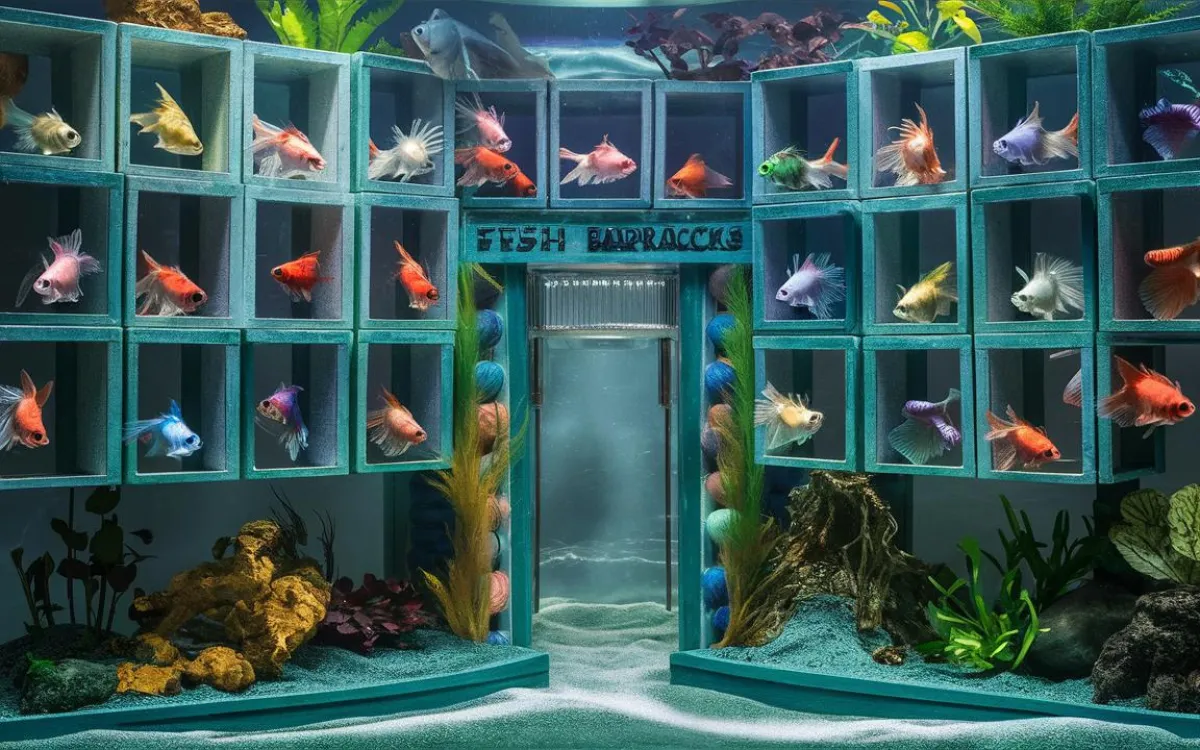Betta fish, also known as Siamese fighting fish, are captivating creatures renowned for their vibrant colors, flowing fins, and captivating personalities. These small, yet striking fish are a popular choice for aquarists of all levels, but providing them with the proper housing is essential for their well-being.
Betta Fish Information will delve into the world of betta fish barracks, exploring the best practices for creating a thriving environment for these aquatic jewels.
Understanding the Needs of Betta Fish
Betta fish, despite their small size, have specific requirements for a healthy and happy life. They are tropical fish, originating from the rice paddies and slow-moving streams of Southeast Asia. This means they need warm water, a suitable environment, and a balanced diet to thrive.
Betta Fish Barracks: The Ideal Housing Solution

The term “barracks” refers to a housing structure designed specifically for betta fish. These barracks are not just simple tanks, but thoughtfully designed environments that meet the unique needs of these captivating creatures.
1. The Importance of Space:
While betta fish are small, they require adequate space to move freely and explore their environment. A minimum tank size of 2.5 gallons is recommended for a single betta, but larger tanks are always better.
2. The Right Temperature:
Betta fish thrive in warm water, with an ideal temperature range of 78-82 degrees Fahrenheit. A heater is essential to maintain this temperature, especially in cooler climates.
3. Water Quality is Key:
Betta fish are sensitive to water quality. Regular water changes, a properly functioning filter, and the use of a water conditioner are crucial for their health.
4. Creating a Stimulating Environment:
Betta fish are curious creatures that enjoy exploring their surroundings. Adding live plants, driftwood, or other decorations provides them with hiding places, enrichment, and a more natural environment.
5. The Importance of Filtration:
A properly sized filter is essential for maintaining water quality. It removes waste, debris, and harmful bacteria, creating a cleaner and healthier environment for your betta.
6. Lighting Considerations:
Betta fish do not require bright light. A low-level light source is sufficient to create a natural environment without stressing the fish.
Choosing the Right Betta Fish Barracks: A Buyer’s Guide
When selecting a betta fish barracks, consider the following factors:
1. Tank Size and Shape:
Choose a tank that is at least 2.5 gallons in size, with a larger tank being preferable. The shape of the tank is also important. Rectangular tanks provide more surface area for swimming and exploration, while round tanks can be more challenging for betta fish to navigate.
2. Filtration System:
A good filtration system is essential for maintaining water quality. Choose a filter that is rated for the size of your tank and provides adequate flow.
3. Heater:
A heater is essential for maintaining the ideal temperature for your betta fish. Choose a heater that is rated for the size of your tank and can maintain the desired temperature range.
4. Lighting:
Select a low-level light source that provides enough light for your betta fish to see their surroundings but does not stress them.
Betta Fish Barracks: Frequently Asked Questions
1. Can I keep multiple betta fish together?
While betta fish are known as “Siamese fighting fish,” it is generally not recommended to keep multiple males together. Males are highly territorial and will often fight to the death. Females can be kept together in a larger tank with adequate hiding places.
2. What kind of plants are safe for betta fish?
Many live plants are safe for betta fish, but it’s important to research specific species to ensure they are compatible with your fish’s environment. Some popular choices include Java fern, Anubias, and Amazon sword plants.
3. How often should I change the water in my betta fish barracks?
It is recommended to change 25% of the water in your betta fish barracks weekly. This helps to maintain water quality and remove accumulated waste.
4. What do betta fish eat?
Betta fish are carnivores and enjoy a diet of high-quality betta pellets, flakes, and occasional live or frozen foods like bloodworms or brine shrimp.
5. How do I know if my betta fish is healthy?
A healthy betta fish will be active, have vibrant colors, and have clear, healthy fins. If you notice any signs of illness, such as lethargy, discoloration, or fin rot, consult a veterinarian who specializes in aquatic animals.
Conclusion
Creating a thriving betta fish barracks is a rewarding experience that allows you to enjoy the beauty and personality of these captivating creatures. By understanding their needs and providing them with a suitable environment, you can ensure their health, happiness, and longevity.
Remember, responsible betta fish ownership involves providing a spacious, well-maintained barracks, a balanced diet, and regular care to ensure their long and healthy lives.

Related Posts
Platinum Butterfly Koi: A Stunning Addition to Your Pond
What Are The Most Expensive Betta Fish? Factors Influencing
Rare Beautiful Betta Fish: Types, Care & Where to Find Them